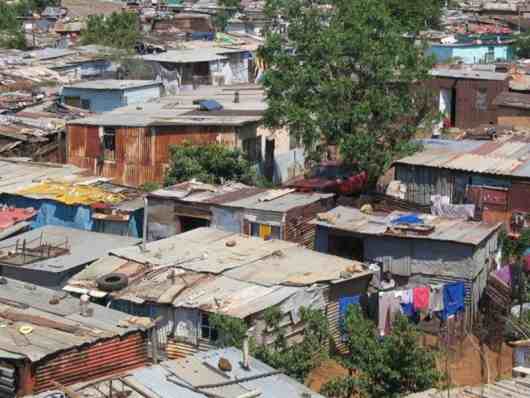The history of the third-world model dates back to the Cold War. The term “third world countries” were created in an attempt to distinguish independent countries that were not supporting NATO or the Soviet Union. However, from its political connotation during the Cold War to its contemporary economic connotation, the concept of “third-world countries” has evolved throughout time. Most third-world countries share a lot of similar characteristics. The definition used today relates to nations that are having financial difficulties and require assistance from other nations in order to maintain their economies, even only temporarily.
Third World Countries: An Overview
The term “third-world countries” refers to a group of economically developing countries. It is one of four segments useful for categorizing global economies according to their economic standing. The Third World lags behind the First and Second Worlds but was ahead of the Fourth World, even though the countries of the Fourth World received very little attention. Currently, the terms “developing country,” “undeveloped country,” or “low- and middle-income countries” are synonymous with it.
Traditionally, several nations in Africa, Latin America, Oceania, and Asia with colonial histories were considered to be part of the Third World. It was occasionally interpreted as being synonymous with nations belonging to the Non-Aligned Movement. The Third World has also been linked to the world-systemic economic division as “periphery” countries that are controlled by the nations making up the economic “core” in the dependency theory of theorists.
What Are Third World Countries?
Third world countries was a term used to describe countries that refused to ally with either NATO or the Warsaw Pact during the world war. However, in recent times, it has been given a new meaning, third countries refer to developing countries with poor economic standards. refer to a political rather than an economic region. However, the term “Third World” has been less common after the fall of the Soviet Union and the end of the Cold War. Terms like “developing countries, least developed countries,” or the global south are replacing them.
Characteristics of Third World Countries
Third-world countries share characteristics that set them apart from the rest of the world. They include low GDP, high rate of population growth, and low employment rate. We explain further below
#1. High Rate of Population Growth
Most developing countries are experiencing rapid population expansion or have a high rate of population growth. Moreover, this occurs frequently due to a lack of family planning alternatives and the perception that having more children will increase the family’s ability to support itself financially. Its growth in recent decades may be attributable to greater birth rates and declining mortality rates as a result of better healthcare.
#2. Low GDP
One of the most distinguishing features of underdeveloped economies is a low real per capita income. Their low real per capita income level causes them to have fewer investments.
It indicates that the typical worker doesn’t make enough money to save or invest. They squander all they earn. As a result, the majority of the population struggles to break out of the poverty cycle it fosters. In emerging nations, a large proportion of individuals live in absolute poverty, or the lowest possible income level.
#3. Continuity with the Main Sector
In third-world countries, rural areas are home to about 75% of the population. The demand structure changes as income levels rise, which causes a rise in the manufacturing sector first and then the services sector.
#4. Depending on Primary Commodity Exports
Considering that the primary sector accounts for a sizable share of output, the primary sector also accounts for a sizable portion of exports. For instance, two-thirds of Nigeria’s exports are crude oil.
#5. High Unemployment Rates
A lot of developing nations face high unemployment rates, which means that a significant number of people are left with no income. That is a challenging problem in most third-world countries. Also, unemployment is a more complicated issue that calls for solutions that go beyond conventional solutions.
History of the Three-World Model
The history of the three-world model can be traced back to the Cold War. A French demographer, anthropologist, and historian by the name of Alfred Sauvy coined the phrase “Third World.” Sauvy observed that a collection of nations, many of which were once colonies, did not adhere to the same ideologies as either Western capitalism or Soviet socialism. The idea of classifying nations as First, Second, Third, and Fourth World was developed during and following the Cold War, which lasted roughly from 1945 to the 1990s.
But later on, the need to partition the world’s economies gives rise to the third-world model. The International Monetary Fund (IMF) and the World Bank, which works to give international assistance for initiatives that serve to strengthen infrastructure and economic systems completely, regularly monitor developing nations.
Generally speaking, economic status and important economic indicators like gross domestic product (GDP), GDP growth, GDP per capita, employment growth, and the unemployment rate are used to describe countries.
These nations are classified as lower-middle-income or low-income by both organizations. The characteristics of third-world countries or developing countries include
- Low levels of education.
- Inadequate infrastructure.
- Poor sanitation.
- Restricted access to health care.
- Low cost of living.
- Low output rates.
- Labour market difficulties.
Many investors who are looking for potential high profits through potential growth prospects may target developing countries even if the dangers are also comparatively larger. Despite the fact that emerging nations are typically thought of as having lower economic performance, technological and industrial advancements can quickly result in significant changes.
Classifying World Countries
The majority of nations today can only fall into one of three broad categories: first, second, and third world. The segmentations of the world have generally shifted to fit within these categories.
First-World countries were regarded as the most industrialized nations with attitudes supportive of capitalism. They are the most industrialized countries with the strongest economic qualities.
The Soviet Union and communism were supported by second-world nations. The Soviet Union used to rule the majority of these nations. Numerous East Asian nations also fall under the Second World umbrella.
The term “Third World” is no longer relevant and may offend many people, in part because the Soviet Union no longer exists. Although their measures are less reliable, developing countries are categorized as such because they show considerable progress in a variety of economic growth categories. The frontier markets frequently exhibit the weakest economic indicators and closely resemble the former Third-World classification.
What is a 3rd World Country Example?
Asian and African states that did not support the USSR or the Soviet Union were considered to be third-world countries. Examples of third-world countries include:
- Afghanistan
- Angola
- Bangladesh
- Benin
- Bhutan
- Burkina Faso
- Burundi
- Cambodia
- Central African Republic
- Chad
- Comoros
- Democratic Republic of the Congo
- Djibouti
- Equatorial Guinea
- Eritrea
- Ethiopia
- Gambia
- Guinea
- Guinea-Bissau
- Haiti
- Kiribati
- Lao People’s Democratic Republic
- Lesotho
- Liberia
- Madagascar
- Malawi
- Mali
- Mauritania
- Mozambique
- Myanmar
- Nepal
- Niger
- Rwanda
- Sao Tome and Principe
- Senegal
- Sierra Leone
- Solomon Islands
- Somalia
- South Sudan
- Sudan
- Timor-Leste
- Togo
- Tuvalu
- Uganda
- United Republic of Tanzania
- Vanuatu
- Yemen
- Zambia
Why Do They Call it a Third World Country?
The Third World is generally regarded as having high rates of poverty, a lack of resources, and uncertain financial stability. This description dates back to the Cold War when nations positioned themselves as neutral and independent.
Is Mexico a First or Second World?
Mexico is thus categorically not any of those other things, even though it is a third-world nation by definition. In comparison to the majority of the globe, Mexico boasts a robust economy, a highly advanced infrastructure, and low infant mortality rates. Although Mexico is technically considered a developing economy by the UN.
Is Mexico a First World?
A nation with an industrialized and capitalist economic system is considered to be in the first world. The UN divides the world into 4 categories based on the economies per capita of each nation.
Is China Considered a Third-World Country?
China is not a third-world country because its economy is thriving. However, China falls under the category of a second-world country. The second world refers to a group of formerly socialist and communist countries and includes China. They are also nations that fell under the Soviet Union’s sphere of influence.
Is America a First-World Country?
First-world countries are those that have developed, capitalist economies and are typically allies of the USA and NATO. The group of nations that sided with the United States following World War II comprised those in North America and Western Europe, as well as Japan, South Korea, and Australia. These nations had more or less similar political and economic goals.
What Is the Best First World Country?
Switzerland has one of the greatest gross domestic products per capita in the world, low unemployment, and a skilled workforce. Switzerland is a little nation in Central Europe, comprising 16,000 square miles of glacier-carved Alps, lakes, and valleys. Its official name is the Swiss Confederation. It is one of the richest nations in the world and has a long history of neutrality.
In the beginning, the Swiss Confederation was created in 1291 as a protective alliance between cantons. The Confederation broke away from the Holy Roman Empire in 1499. After years of warfare, the Confederation became a centralized federal government in 1848 thanks to a new constitution. Since that time, the nation has experienced a fair amount of peace.
Low corporate tax rates, a financially dominated and highly developed service sector, and a high-tech manufacturing industry all contribute to the nation’s robust economy.
Are There Any Fourth-world Countries?
The term “Fourth World” is frequently used to describe the 47 least developed nations. These are the nations with the lowest levels of development and the greatest degree of poverty. The term “low-developed countries” is frequently confused with the official acronym LDC.
With 1.10 billion people living in these 47 nations, they make up 13.94% of the world’s population. Most of them are from Africa. Following this are a few nations in Oceania and Southeast Asia. All but one country—Haiti—represents Europe and America.
Many of the people who reside in these countries have no political affiliations and are hunter-gatherers who belong to tribes or nomadic societies.
In Conclusion,
“Third-world country” is a term used to describe countries that are still developing. However, it is an outdated term that is no longer in use today. Usually, those countries that fit into this sector are granted privileges and contractual terms by the International Monetary Fund, World Bank, and World Trade Organization.
FAQs
What are the 7 oldest countries in the world?
- Greece – 3000 BC
- China – 221 BCE.
- San Marino – 301 CE.
- France – 843 CE.
- Hungary – 1000 CE.
- Egypt – 3500 BC.
- Japan – 660 BCE.
What is the smallest country to exist
The smallest country to exist is Vatican City, with a surface area of only 0.2 square miles, or about 120 times that of Manhattan Island. It is located in Italy.
How many countries are there in the world
As of a recent study, there are 195 countries currently in the world. This number includes the Holy See and the State of Palestine, two non-member observer nations, together with the 193 United Nations member states.
- HIGH-INCOME COUNTRIES: All About It and Full List of High-Income Countries
- Top 5 Cold Calling Tips For Successful Sales
- COMPARATIVE ADVANTAGE: Definition, Examples, Law & Difference
- COLD CALLING: Cold Calling Strategies 2023
- MEXICAN CAR COMPANIES: Top 10 Mexican Car Brands






